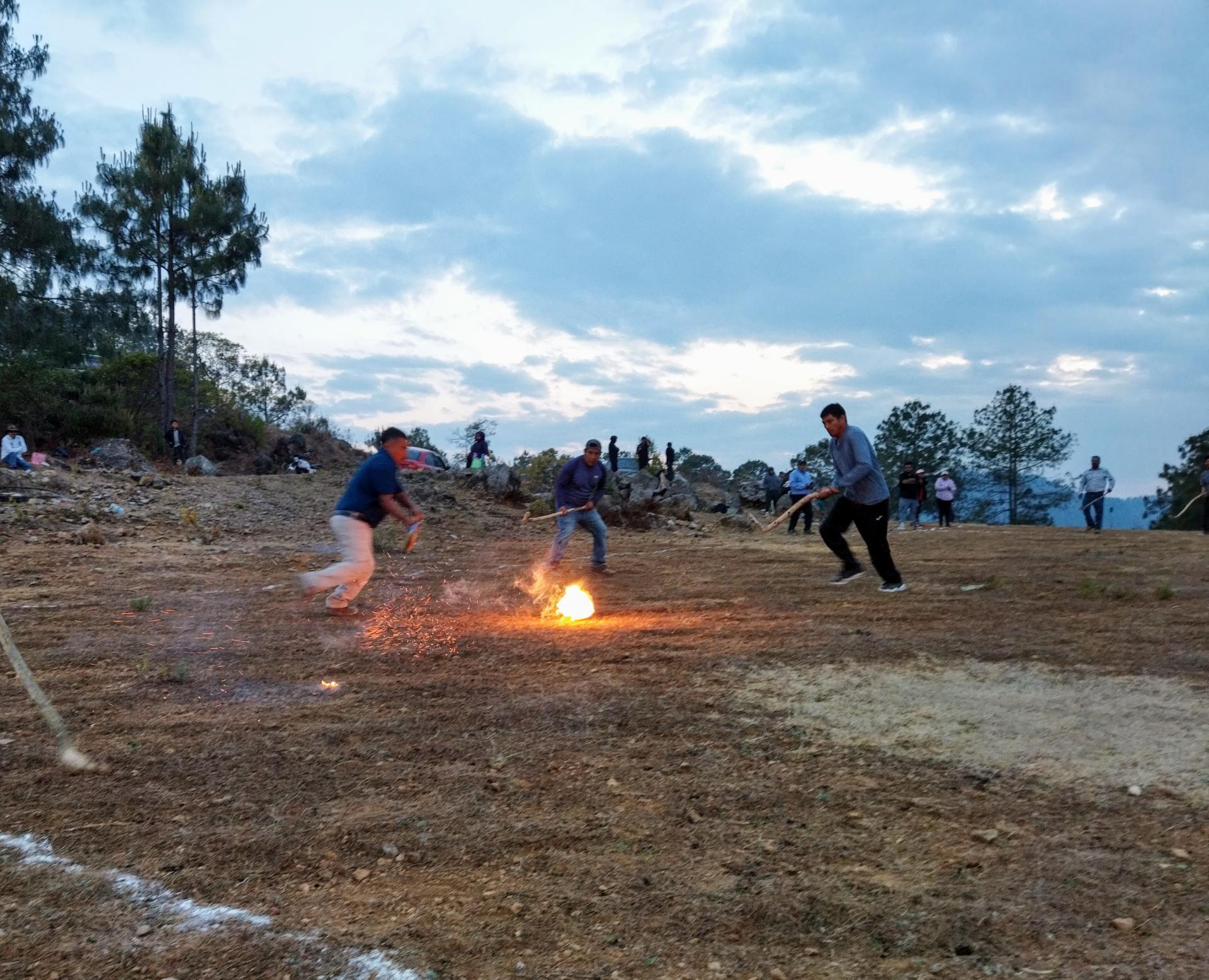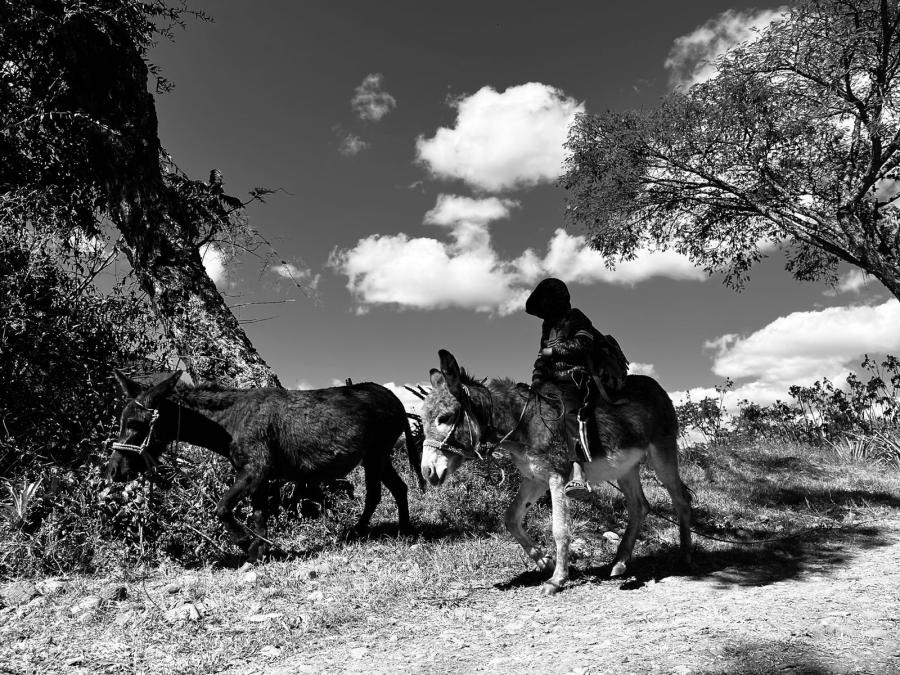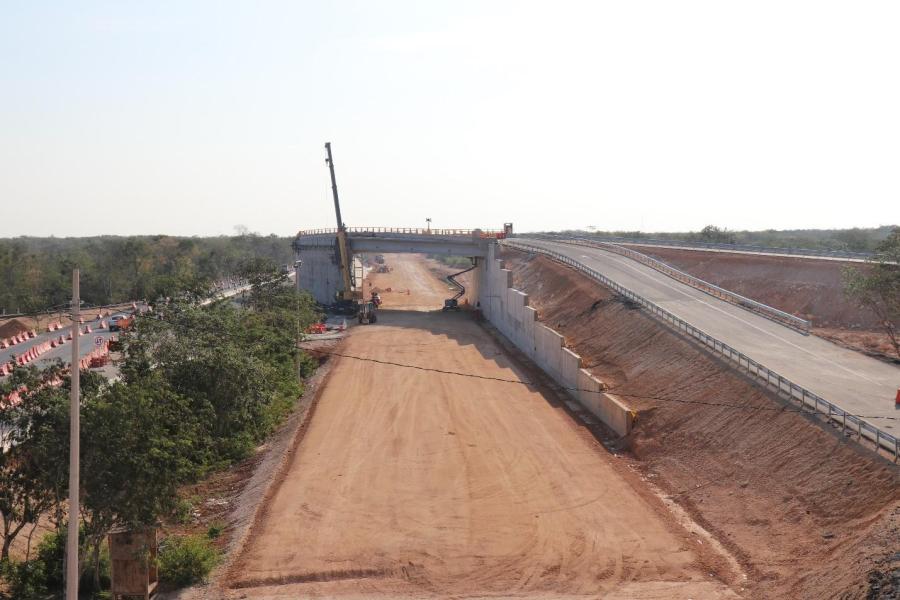By Verónica Aguilar (Ñuu Savi, CS Staff)
A fireball jumps across the plain in the semi-darkness of the night, which is just settling in. A gust of wind makes it jump in another direction and stokes its flame. We see the glow of the ember lengthen as it advances parallel to the ground. We hear shouts in Sa'an Savi, one player encouraging his teammate, another asking for the ball, another advising where to throw. The shouts of the players are joined by those of the crowd. It is common for players to end up with scrapes and bruises. Perhaps they were hit with a seku on the shins, perhaps the ball burned them when it brushed their skin, perhaps they slipped on the stones and lost their balance. You could say that it is a dangerous sport, but in the communities of Ñuu Savi in Mexico that still play it, we say that it is beautiful and also unique, special among other sports.
The game is called seku (twisted), referring to the stick used to hit the ball. To make it, a branch from a strong tree, such as the tuntoko or tuiñu, is chosen well in advance. The branch is shaped and left to dry in the sun for many days before the game. Care must be taken to ensure that the seku is adapted to the height and strength of the player; it is recommended that it be as tall as his waist and that he can carry it for a long time while running. The ball also requires preparation: trunks from the tusava tree, a tree that produces red flowers in the dry season for the hummingbird to feed on, are cut in advance and left to dry. The wood is porous and spongy, which helps the resulting balls burn slowly.
Flat ground is chosen for the playing space. This is the only specification, necessary in a mountainous landscape. Otherwise, the field can be as large or small as agreed on by the players and the organizers. There are no standardized measurements because not everything has to be standardized and because decades ago, groups of children played on any plain while they looked after their sheep.
Before starting a game of seku, a ritual is performed where the Earth is spoken to. Permission is asked to play, and that no one gets hurt. Mezcal is sprinkled around the perimeter and in the center of the field. A fire is also lit where the balls will be lit, one by one. When a ball gets lost in the woods, breaks, or has been consumed by the fire, it will be replaced by another. To start playing, a lit ball is placed in the center of the field and from there, everyone runs. The objective is to take the ball to the opposing goal.

Ñuu Savi archaeologist Omar Aguilar Sánchez told me that perhaps there was spiritual meaning to seku, especially because of the use of fire. However, we do not remember it and we have not found anyone who can confirm this. It is currently played as a sport, with tournaments held during the holidays in many of the communities of San Juan Mixtepec. It is also played in Teposcolula and in Tamazulapam (Ñuu Savi). And we know that our Purépecha brothers have a similar game.
Seku is a sport whose existence is threatened, since there are long distances between the places where it is still played. I think that it was once played in the surrounding communities of this region of Oaxaca and was abandoned. Perhaps it was even played in other places in southern Mexico. Today, it has become a symbol of identity in the almost 90 communities of San Juan Mixtepec, which is why tournaments are promoted with prizes or cash. Hopefully, despite the advance of colonization, we can maintain it and enrich it in each generation.



